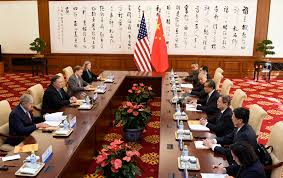China’s Latest Banking Move Shows How Nervous It Is About Its Economy

China’s mainland markets tumbled on their first trading day following the central bank’s decision to cut the amount of cash that the country’s lenders keep in reserve.
Normally China’s markets see a boost after the Golden Week holiday, but the Shenzhen and Shanghai composites fell 3.8% and 3.7%, respectively. And markets around the Pacific felt shockwaves: Hong Kong’s Hang Seng Index and the Australia S&P/ASX 200 Benchmark Index each dropped by about 1.4%.
The People’s Bank of China said yesterday it would cut the reserve requirement ratio (RRR) for most banks by 100 basis points from Oct. 15, which will inject 750 billion yuan ($ 109.1 billion) in cash into the banking system.
The move essentially frees up money for China’s state-controlled banks to lend, the New York Times explains. About $ 65.5 billion will be directed to banks to repay debts due in coming weeks, while the rest will be pushed into the financial market. The central bank’s move signals that China’s economy “is really not doing well,” Chen Shouhong, the founder of the investment information platform Gelonghui, wrote on WeChat.
The RRR is currently 15.5% for large institutions and 13.5% for smaller banks. The cut, the central bank’s fourth in 2018, comes amid concerns about persistent debt and the economic impact of Beijing’s ongoing trade war with the U.S.
Sian Fenner, a senior economist at Oxford Economics, told CNBC she expected a RRR cut this month. “They clearly want to boost liquidity,” she said. “This month we’ve got tax repayments, we’ve also got some maturing of some debt but also, they want to make sure that they’re increasing their credit growth which has been quite sluggish … because of earlier deleveraging of financial risks.”
It is important for Beijing to manage those risks for longer-term growth, Fenner said, adding that “the focus is now on growth.”





